See also:
- Alternaria leaf spot of crucifers (LIHREC website) for images of this disease on Brussels sprouts, cauliflower, cabbage, and kale plus additional information.
Introduction
Alternaria leaf spot is a common foliar disease of brassica crops caused by the fungal pathogen Alternaria brassicicola. The disease can be a problem for many brassica crops including cabbage, cauliflower, kale, brussels sprouts, and broccoli. Even small infections can lead to an unmarketable crop. Severe foliar infections can lead to a reduction in yield due to leaf loss or reduction in weight.
Causal Agent
Under the right environmental conditions, the fungus can thrive and cause severe infection. Alternaria brassicicola produces spores after exposure to high relative humidity (~87%) and temperatures between 68-86 °F. The spores are then released during warm dry periods shortly after a rain. The spores are primarily aerially dispersed but can also be dispersed by rain splash. The optimal temperatures for new infections to occur are 55-75 °F. Alternaria brassicicola prefers cool weather and long periods of leaf wetness making fall weather in upstate New York an ideal environment.
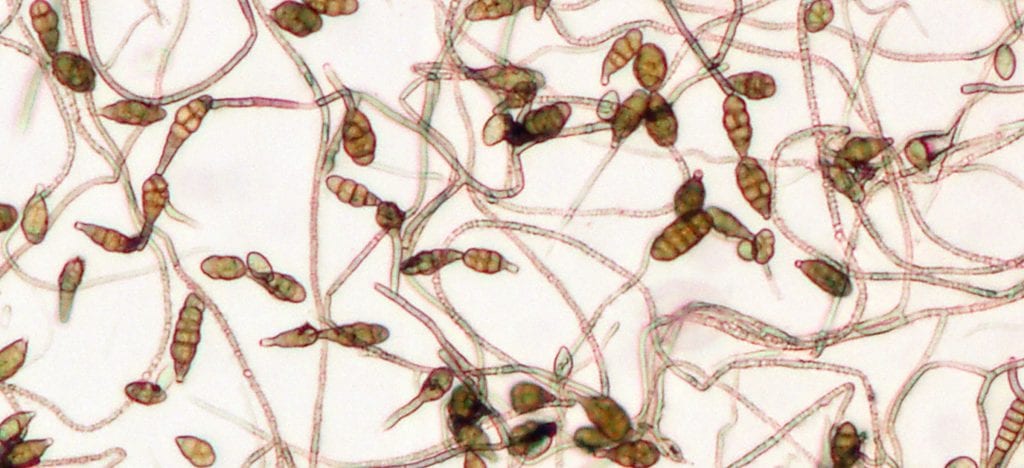
Symptoms
The first symptoms to appear are pin-sized black specks found on the leaf surface or stem. The specks enlarge concentrically, creating a distinct target spot or bull’s eye lesion with a yellow halo. The lesions are visible from both sides of the leaf and the necrotic lesions can easily tear. Severe infections on leaves can cause leaves to fall away from the plant. Black sooty spores are produced on the surface during extended periods of high humidity. Symptoms can appear on cauliflower curds or broccoli heads in addition to the leaves. Symptoms are typically seen on older, lower leaves first.
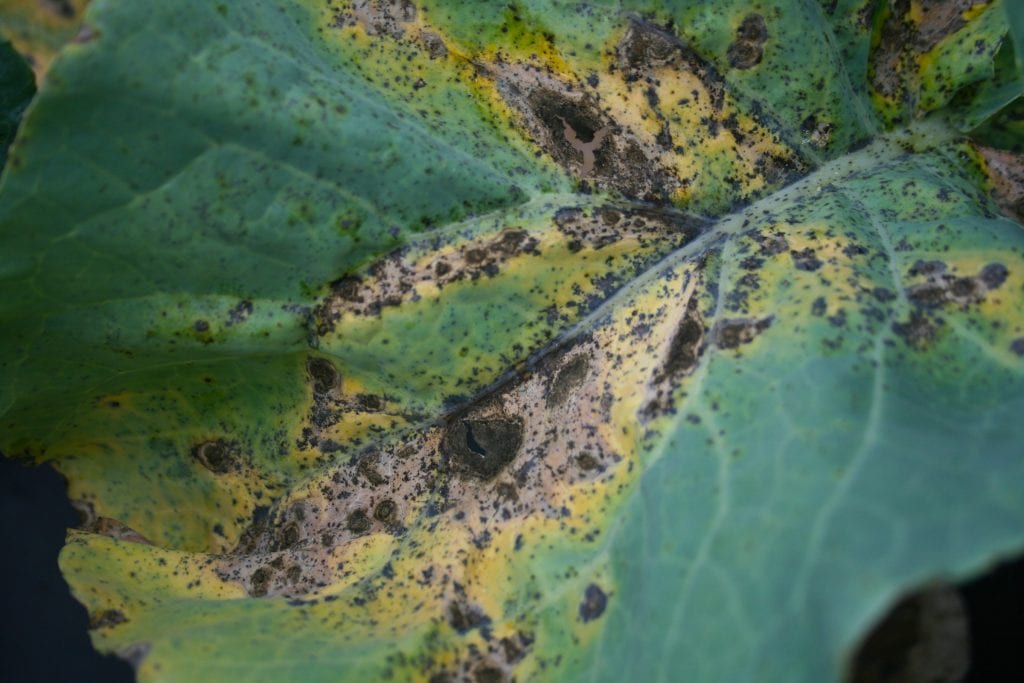
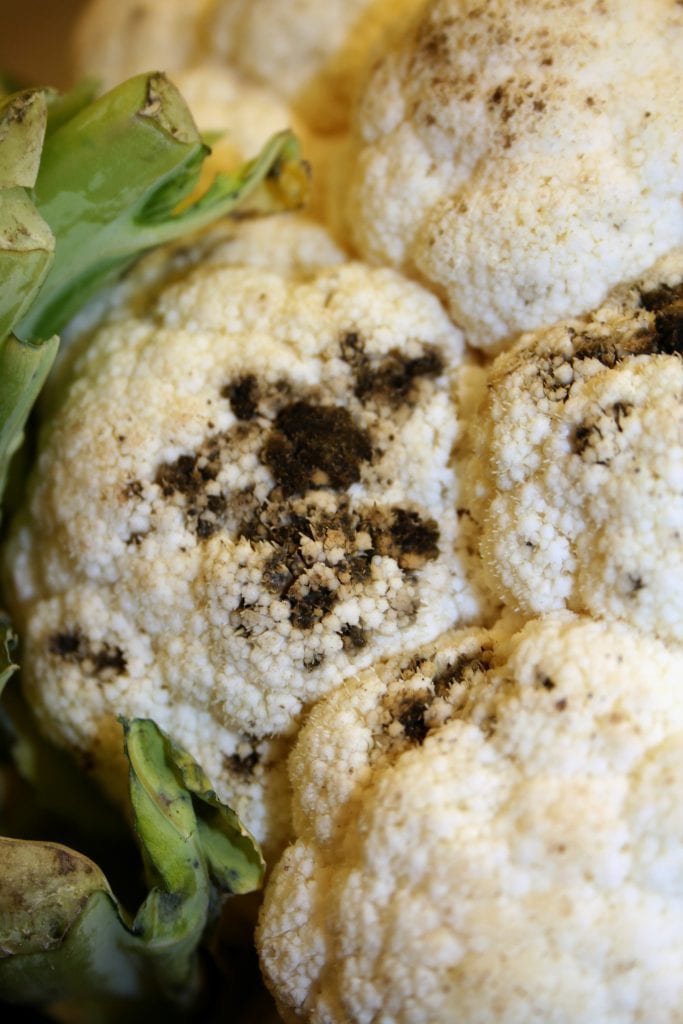
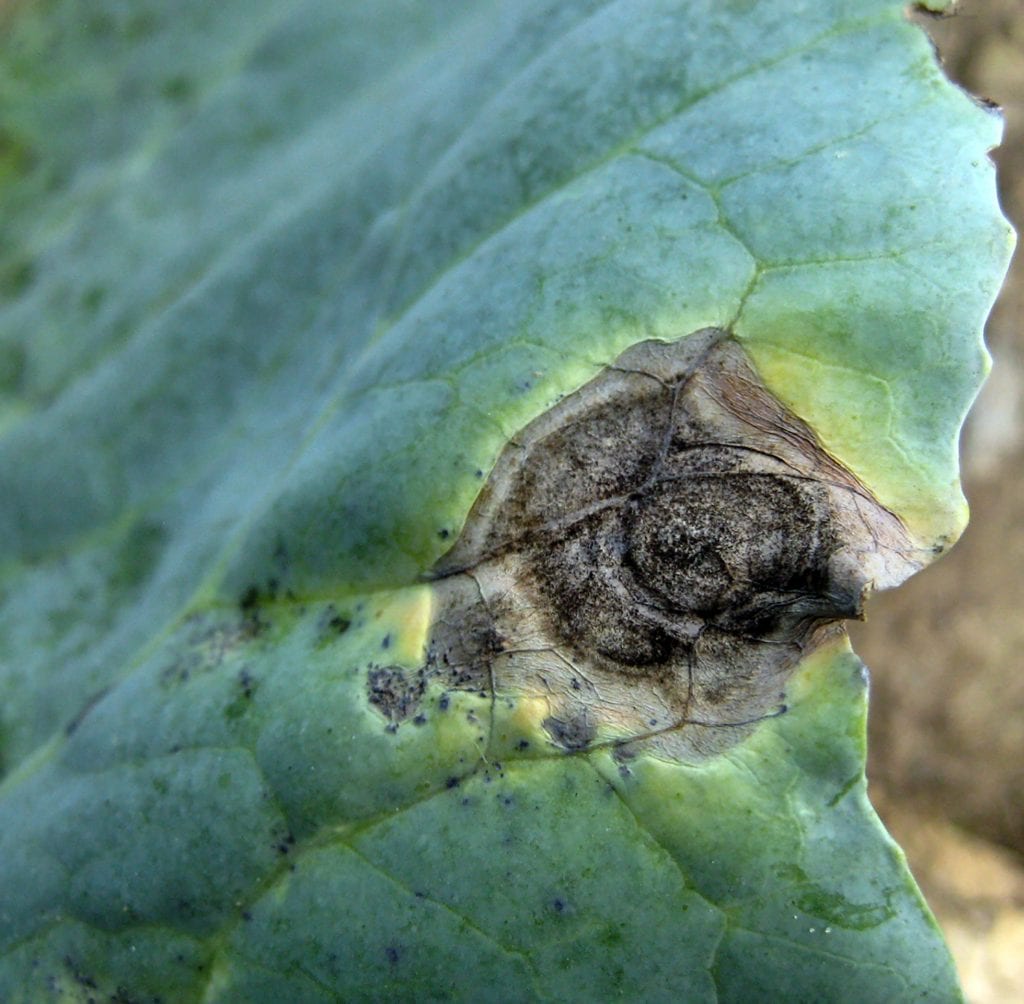
How the Pathogen Spreads
Infected seed is one primary source of Alternaria brassicicola inoculum. The pathogen can be found both internally and on the seed surface. Infected seed can result in lower germination rates and infected seedlings. Another primary source of inoculum is overwintering plant debris. Alternaria brassicicola can survive on plant debris and even continue to sporulate. During the growing season, inoculum can be spread by wind, rain, and insects including flea beetles. Brassica weeds can also become infected and be another source of inoculum.
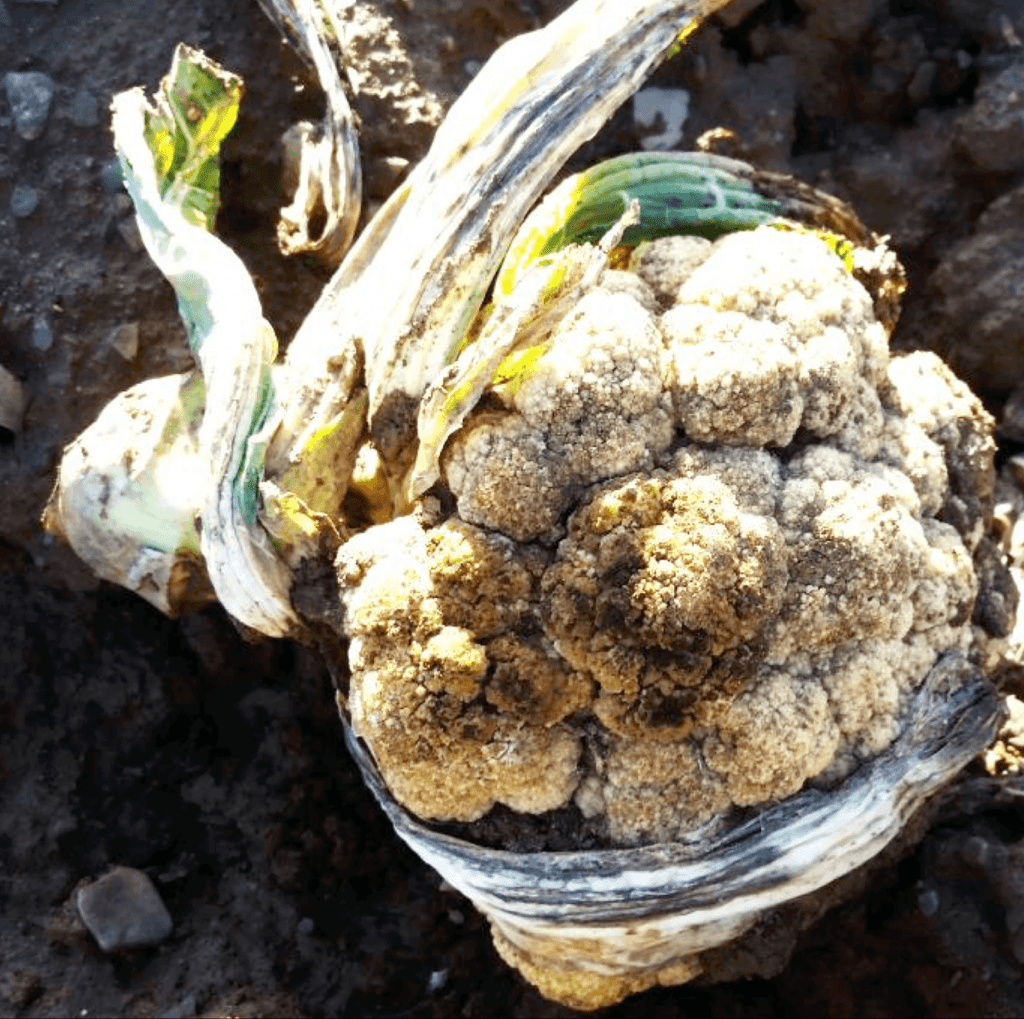
Management
Good cultural practices will reduce the amount of inoculum present each year:
- Use certified clean seed
- Remove or bury plant debris
- Rotate crops and perform a 3 year rotation of brassica crops (mustard can be a host)
- Control weeds
- Control insect pests
- Avoid wounding
Fungicides are available to help control Alternaria leaf spot and should be used according to the product label. Common fungicides used to control Alternaria leaf spot in New York include chlorothalonil and azoxystrobin.
More Information
- For more information, please contact: Chris Smart – cds14@cornell.edu
- This page was created by Martha Sudermann – mas835@cornell.edu


